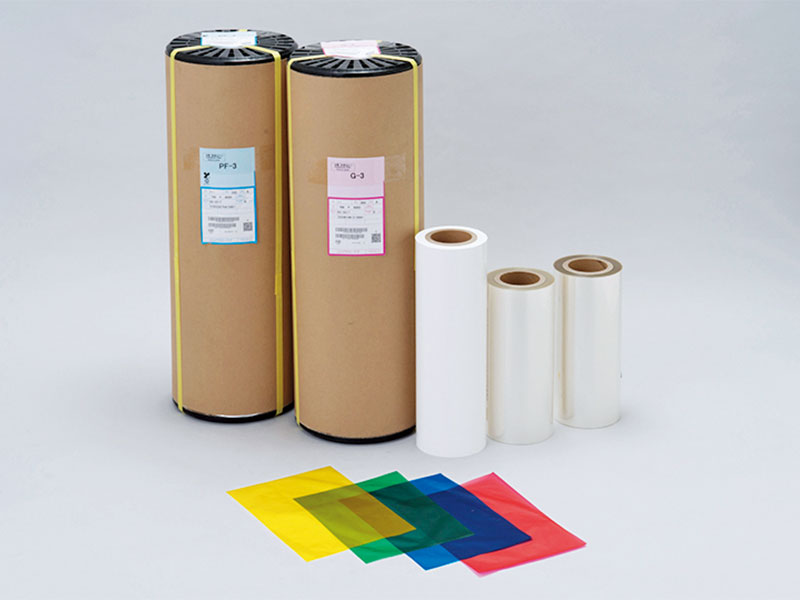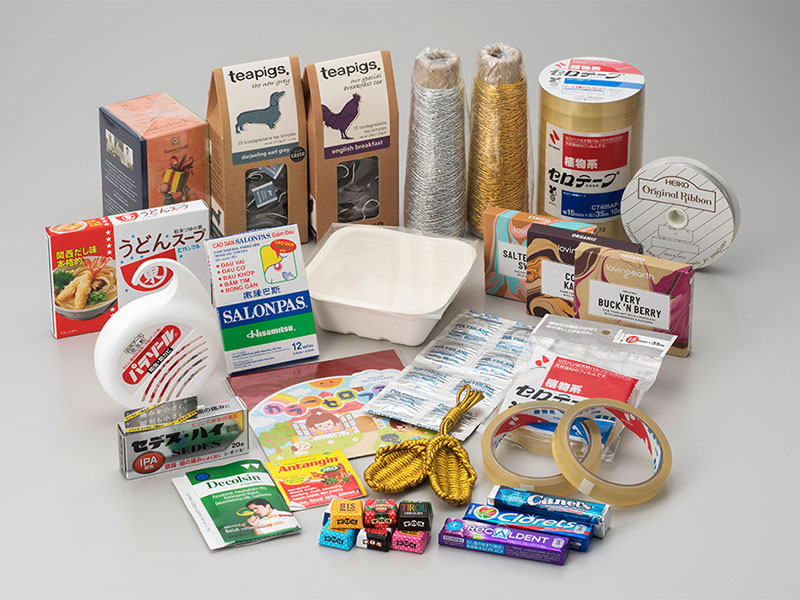Cellulose Films
 Cellulose Films
Cellulose Films
Earth-friendly films
A transparent film manufactured from pulp.
Cellulose films are made from cellulose. (Cellulose: A main substance of plant cell walls)
The calorific value generated with combustion is low and no secondary pollution occurs by combustion gas.
Cellulose films are promptly decomposed in soil or compost and are degraded into water and carbon dioxide.

Main application
Other than for cellophane tapes, they are used for pharmaceutical products as medicine packaging. For food product purposes, they are often used for candy and chocolate packaging.

Uncoated cellulose films (PT)
High transparency and excellent gloss. Furthermore, it has extremely good longitudinal and latitudinal cuttability, along with heat resistance and antistatic properties.
Coated (Moisture-proof) cellulose films (MST)
Coating moisture-proof resin adds a barrier and thermal adhesive properties. Treatments are applied mainly on both sides.
NatureFlex
NatureFlex ™ - compostable films for flexible packaging are an excellent example of the circular economy in action.
Made from renewable and sustainably resourced cellulose (wood pulp from managed forestry) and certified as industrial and home compostable;
NatureFlex films begin and end their life as a natural, environmentally responsible product.
Precautions for handling cellulose films 
Handling conditions for preserving, transporting and processing cellulose films
When handling cellulose films at the time of preserving, transporting and processing—temperature, humidity and pressure, etc. affect the cellulose film's quality. It is recommended to use them following each of the terms below.
①Temperature and humidity
Temperature around 20 degrees Celsius and humidity around 55% are the most appropriate storage environment conditions for cellulose films. For use in winter, it is preferable to use them after keeping them wrapped in a temperature and humidity-controlled room for over 24 hours.
②Store in a place where direct sunlight can be avoided.
③Avoid placing materials directly on the floor. Stack them on shelves.
④Do not apply extreme loads on the materials during storage.
Avoid stacking in tiers as much as possible. Avoid stacking laterally to prevent shape deformation.
⑤Do not unwrap until immediately before use. (Re-wrap in high moisture-proof films, such as aluminum-metallized film to store unused remaining parts.)
⑥Ideally, the storing period should be 60 days or less.
⑦Handle with care to prevent scratches from impacts and flaws on the edges.
Cellulose films are affected by environmental humidity; please give a considerate amount of attention especially for ⑤.